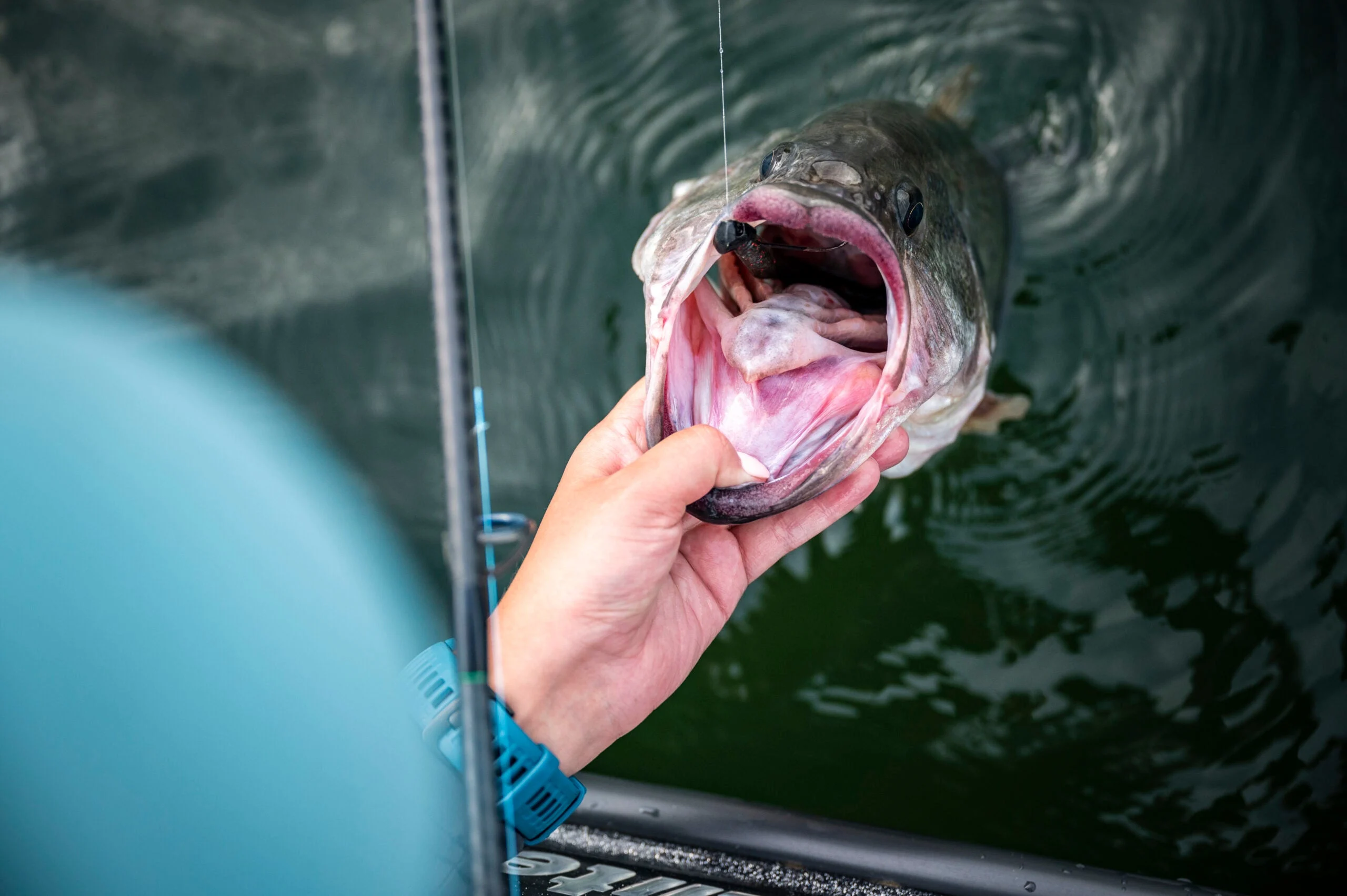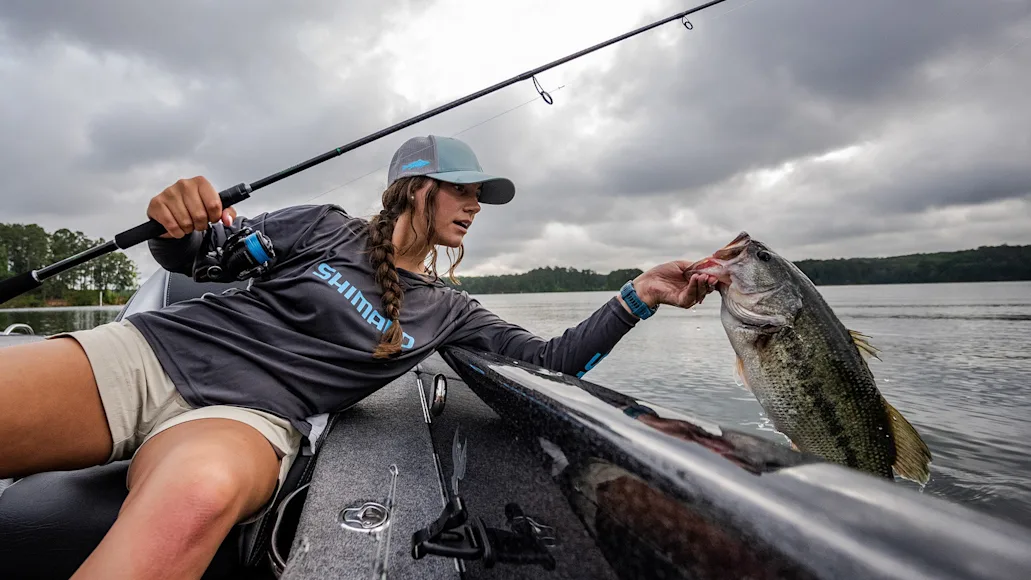There are dozens of ways to rig soft plastic baits to create various presentations for hungry bass. Many of these bass fishing rigs are situational, offering the ideal setup to target specific cover, depth, or forage. Having a simple yet effective arsenal of bass rigs can ensure you’re prepared for any situation. However, it can be daunting to make sense of the various sizes, colors, and shapes of soft plastics paired with the wide variety of hooks, weights, and other terminal tackle. That’s where I come in.
Below are five classic bass fishing rigs that are perennial favorites among serious anglers. Once you have the specific tackle for each rig, you can start dialing in your technique. Then, you can bring these five rigs to any bass fishery in the country and catch fish—both largemouth and smallmouth. So, before you start filling your tackle box with crazy baits and lures, make sure you have these five classic bass fishing rigs ready to go.

A respectable largemouth caught on a finesse-style rig. Shimano
1. Wacky Rig
There are few baits more effective at catching temperamental bass shallow than the wacky rig. And all you need is a wacky hook and a worm. Yes, it’s that simple. Tie on a straight shank or circle wacky hook and run it through the midsection of the worm. Now you’re ready to fish. Finesse worms, trick worms, and Senkos all work really well on a wacky rig. Cast the bait out near or under shallow cover and let it fall slowly. Bass will usually eat it on the descent. This presentation works best on spinning gear with a 20-pound-test braided mainline tied to a 6-foot, 10-pound-test fluorocarbon leader.
2. Dropshot Rig
The dropshot rig is one of the most popular finesse-style bass fishing tactics. Built with a dropshot hook and a dropshot weight (separated by a short drop leader between the two), this presentation is designed to rocket straight to the bottom on a vertical fall. Dropshots are best fished with spinning gear, and anglers should lighten up on their leader for optimal success. Use a straight-tail worm or a small minnow-style soft plastic as your bait. Fish it in and around cover like brush piles and boulders or even out in areas with minimal cover.
3. Carolina Rig
The Carolina rig is hard to beat as far as utility is concerned. It works well whether targeting bass in shallow water or deep, but you’ll want a fairly clean bottom. These rigs consist of a weight slid up on the mainline, a bead next, a swivel, and a leader line tied from the swivel to a hook.
To decrease the number of snags, the weight typically needs to be cylindrical or egg-shaped. The bead keeps the weight from damaging the knot tied to the swivel, and the swivel maintains the distance between the weight and the hook. Leader lengths vary, but 18 inches is a good place to start. If desired, adjust to a longer or shorter leader.
4. Texas Rig
The Texas rig is perhaps the most common bass fishing presentation. It is a simple setup that works across a broad range of cover and depths. You can also use a Texas rig to target largemouth, spotted, and smallmouth bass. To rig a Texas rig, you’ll need a bullet weight, a worm hook, and a soft plastic lure. Slide a 3/8-ounce bullet weight onto your line, going through the pointed end first. Tie on a 4/0, round-bend worm hook and then rig a soft plastic lizard weedless.
5. Ned Rig
Though the name has “rig” in it, many anglers don’t consider a Ned rig an actual “rig” because rigs typically have more components. Even though this is just a simple soft plastic on a jighead, we included this rig not only because of its nomenclature but also because it is extremely effective at catching fish.
If you fish in more than five feet of water on bare bottom or around sparse cover, a Ned rig is almost guaranteed to get a bite. One of these flat, lightweight jigheads paired with a mini soft plastic stands straight up on the bottom and offers a defenseless morsel that is hard for a bass to resist.
.






